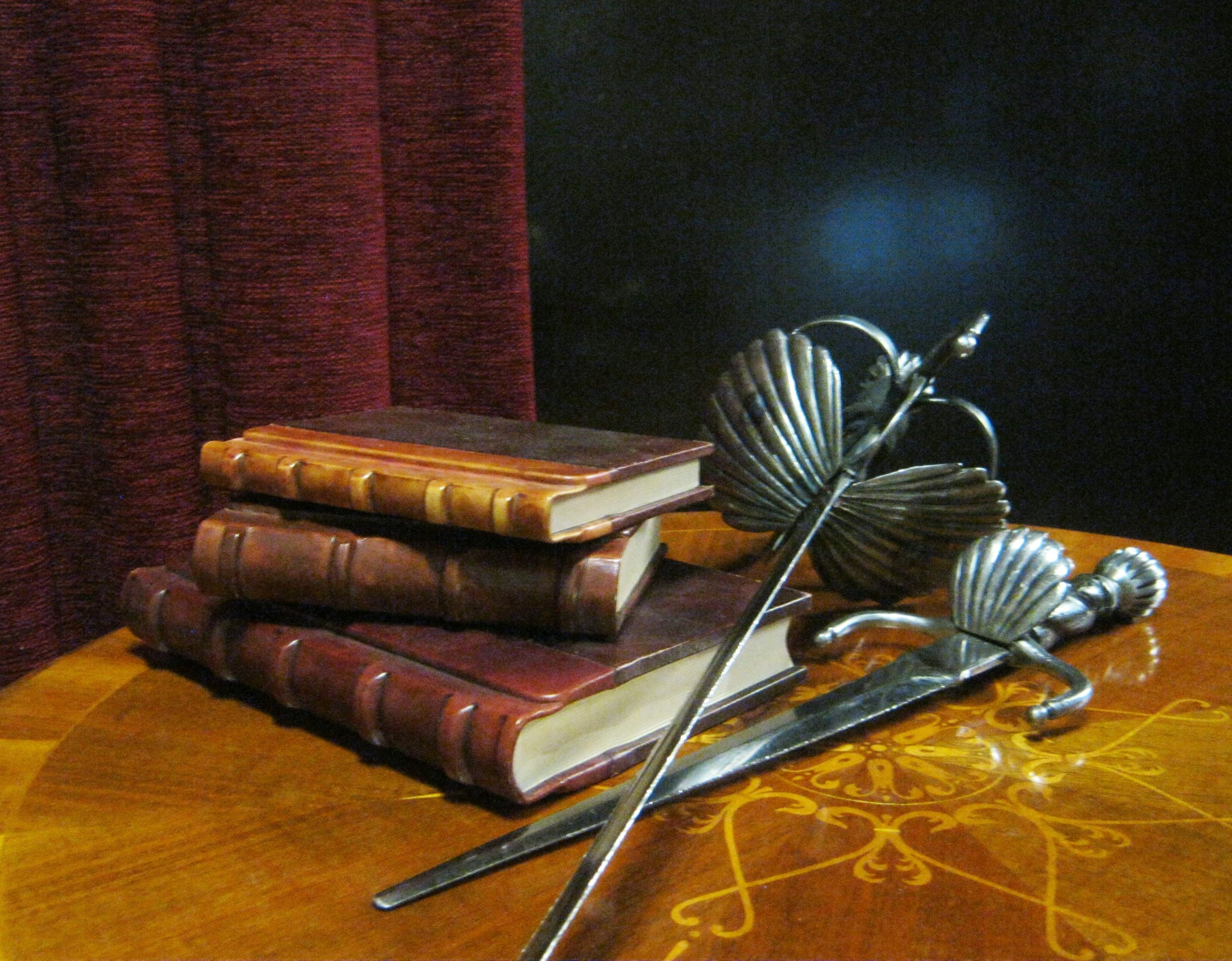
The Weapons In-depth
Rapier
Rapiers were meant for precision and thrusting attacks, but they can cut with both edges as well. Fighting with rapiers is about careful distances, timing and gaining advantage over the opponent’s blade.
There are a great many styles of rapier fencing. In the club we practice Destreza and Fabris.
Destreza, 1500-1700
Video Credit to Academia de Espada - Ton Puey
The Spanish designed a system for the rapier based on blade control, circular movements and disarming the opponent.
It is a flowing, graceful kind of fencing.
The idea was to preserve one’s own life at all costs, and, as far as possible, the opponent’s as well. This is achieved by approaching at angles and in circles, working closer and closer to the opponent while having control of their blade all the while. When finally close you can either wound the opponent or use your other hand to grab the opponent’s arm or literally pull the sword out of their hand.
Thinking ahead and mapping the opponent’s responses is the key.
Destreza was developed in the 1500s and stayed largely unchanged for 200 years compared to many other styles.
Fabris, 1604
Video Credit to Janicina
The Italians had a different and in some ways opposite approach. They deny the opponent any blade contact until they find a clear, straight path to kill.
It is very minimal and efficient.
This prevents giving away your intentions to the opponent because they can’t feel the pressure of your blade. Your attacks simultaneously displace the opponent’s blade and pierce them. A single motion contains both defense and offense.
Exact timing and distance is needed here.
The fencing master Salvatore Fabris lived in Denmark and was the teacher of the Danish king Christian IV. His gold-lettered manual is still stored in Copenhagen, Denmark at the National Library.
Sabre
Video Credit to the Academy of Historical Fencing
Sabres are shorter but agile. Fights generally see more back and forth than other weapons, but mistakes and missteps are quickly punished.
It’s fast and snappy.
Sabre fights can look like a contest of reflexes but really you must think 3 or 4 moves ahead. What looks like a simple, clean hit is often the sum of several moves, each contributing to a better, safer position to strike from. This is caused by the sabre’s main feature: it’s easy to move. But it’s also hard to stop once you start a cut, so you must either follow it through or make false cuts that stop short to provoke a reaction.
Proper form and efficient movements are mandatory.
British Military Sabre from the 1800s and a bit earlier has excellent documentation from fencing masters like Henry Angelo and Charles Roworth.
Longsword
Video Credit to Martin Fabian
Two-handed swords are surprisingly fast and not much heavier than the rapier. Despite what you might think there is nothing slow or clumsy about this big sword.
Two-handed swords are a whole-body experience.
There are countless historical sources for styles of longsword.
Want to hold a sword?



